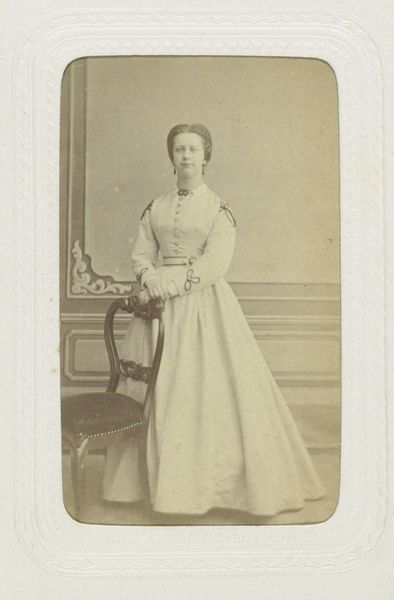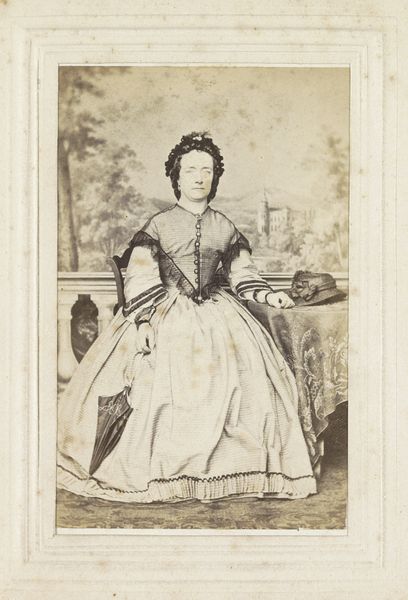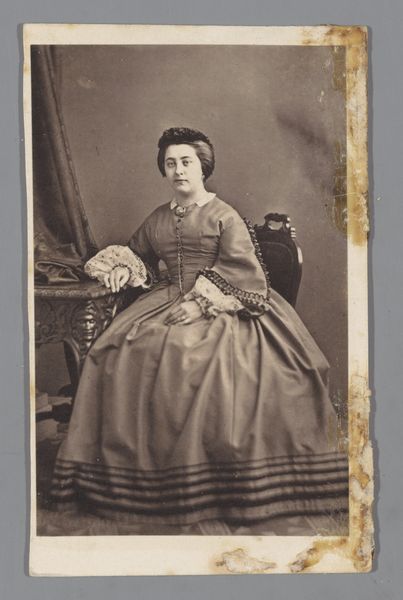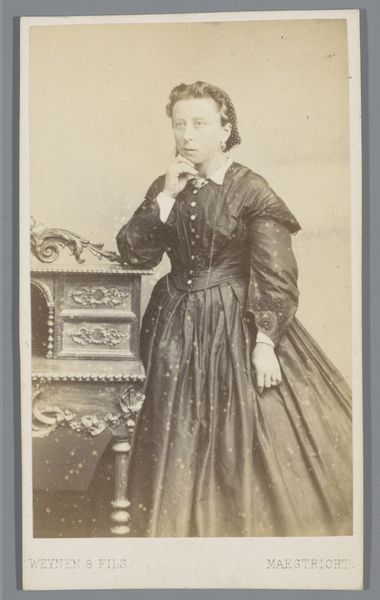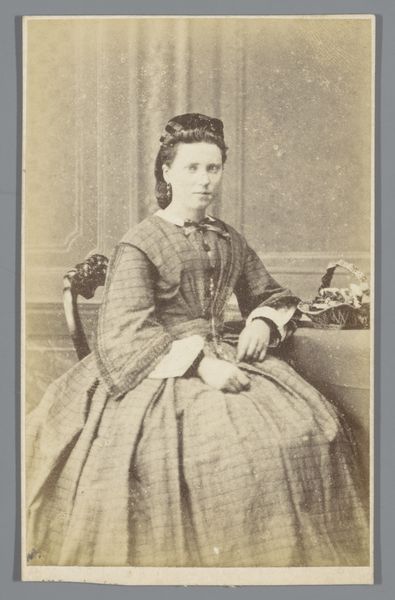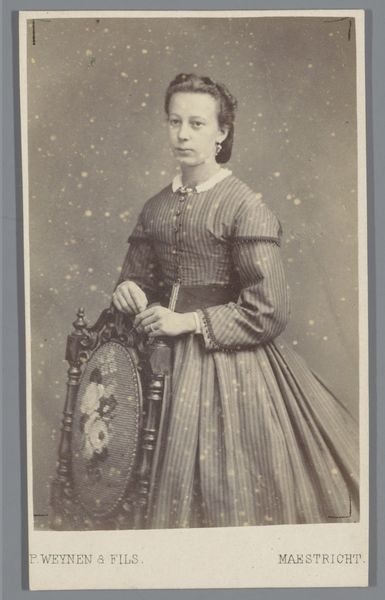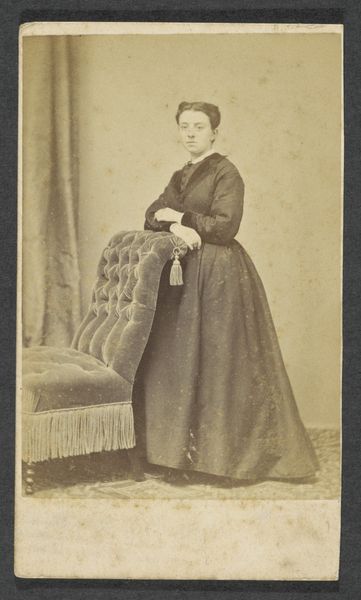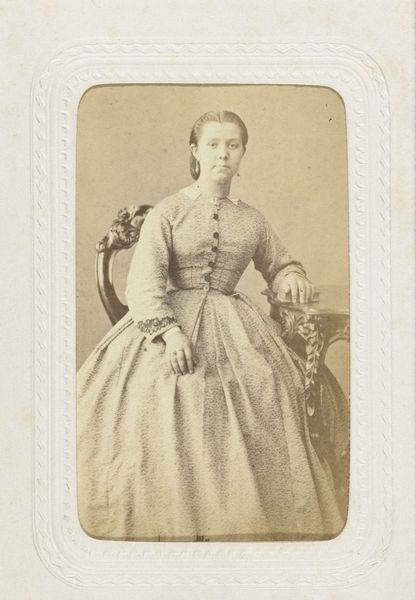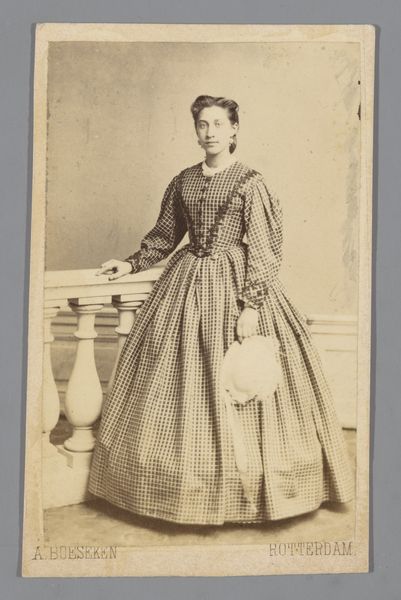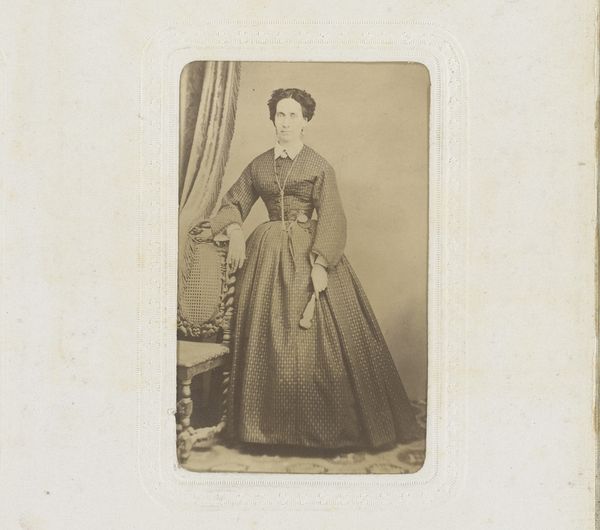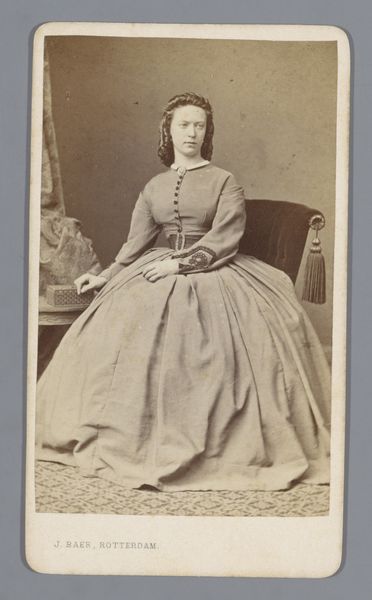
Portret van een vrouw in een lange jurk, staand voor een landschapsdecor 1854 - 1865
0:00
0:00
photography
#
portrait
#
photography
#
19th century
#
genre-painting
#
dress
Dimensions: height 86 mm, width 54 mm
Copyright: Rijks Museum: Open Domain
Curator: Welcome to the gallery. Today, we're looking at an intriguing portrait from between 1854 and 1865, titled “Portret van een vrouw in een lange jurk, staand voor een landschapsdecor”, attributed to P. Weijnen & Fils. Editor: Immediately striking is the sheer volume and texture of that dress against the staged pastoral background. There’s something melancholic about it; the muted sepia tones only enhance that feeling. Curator: Observe how the composition utilizes the landscape decor and ornate chair, juxtaposing nature and artifice. Note how the long dress is carefully lit and draped to suggest roundness and mass through chiaroscuro. Editor: I see it as an encoding of the woman’s position in society: corseted, framed, posed for posterity. Who was she? What aspirations were considered acceptable, desirable, achievable for a woman like her at that time? Was this photograph intended to represent power? Or does the subject perform her perceived station in a colonial landscape? Curator: The meticulous staging invites deeper visual analysis. Look at the placement of her hands; her careful posture—every detail constructs a tableau intended to convey respectability and perhaps a carefully cultivated persona. Editor: Respectability through constraint. Even the backdrop hints at a longing for a world that's both present, through photographic representation, yet forever out of reach for some subjects. In addition to an individual, she is a stand-in, or perhaps even an embodiment of the social limitations of womanhood. Curator: Your contextual interpretation unveils hidden layers, enriching the composition in meaningful ways. But beyond that, what does it mean that this is a photograph from this period? I read an explicit commentary on photography itself. In what ways does its new form challenge modes of viewing painting, particularly regarding representation, gender and art? Editor: Indeed. And now I cannot stop wondering if her dress was chosen by herself. In what way could women self-define during the nineteenth century? I find it interesting to reconsider her place through a more decolonized interpretation. Curator: What a powerful way to conclude our discussion on this portrait—bringing us face to face with how both visual details and social history inform how we receive art.
Comments
No comments
Be the first to comment and join the conversation on the ultimate creative platform.

